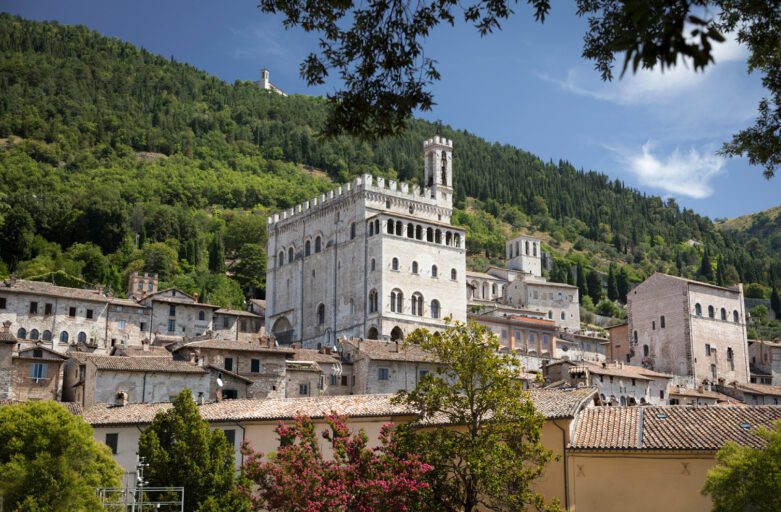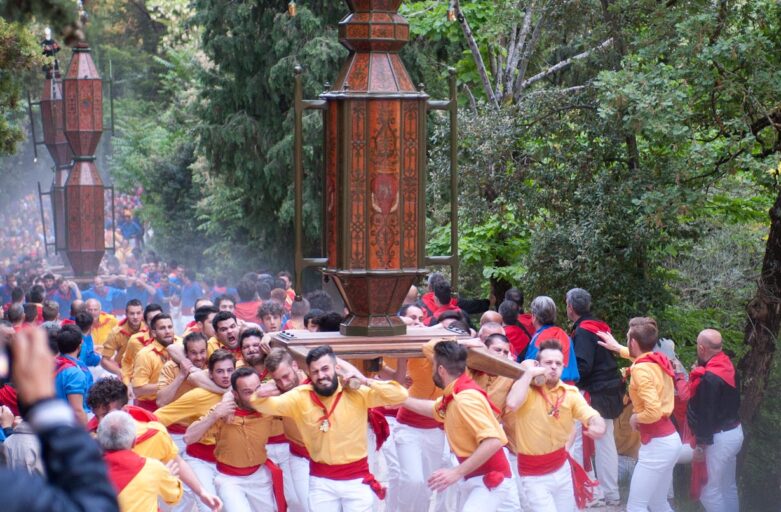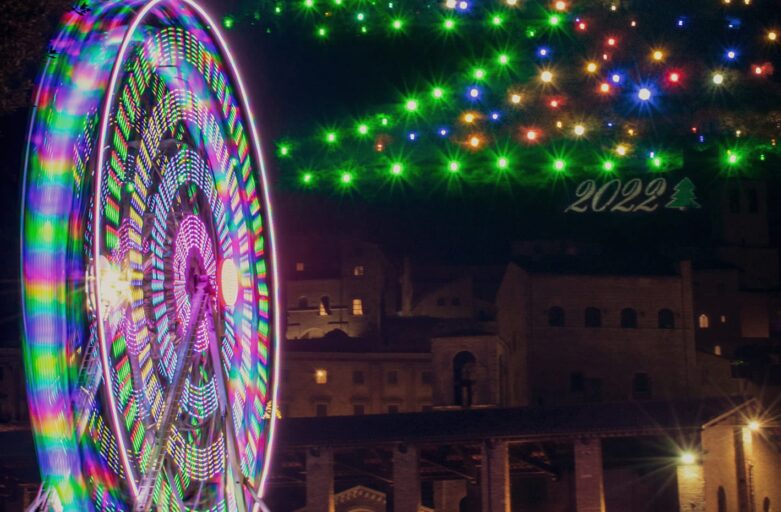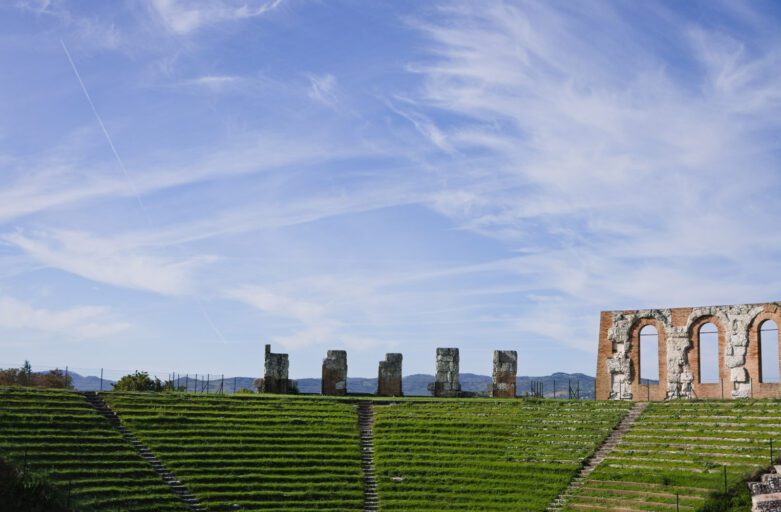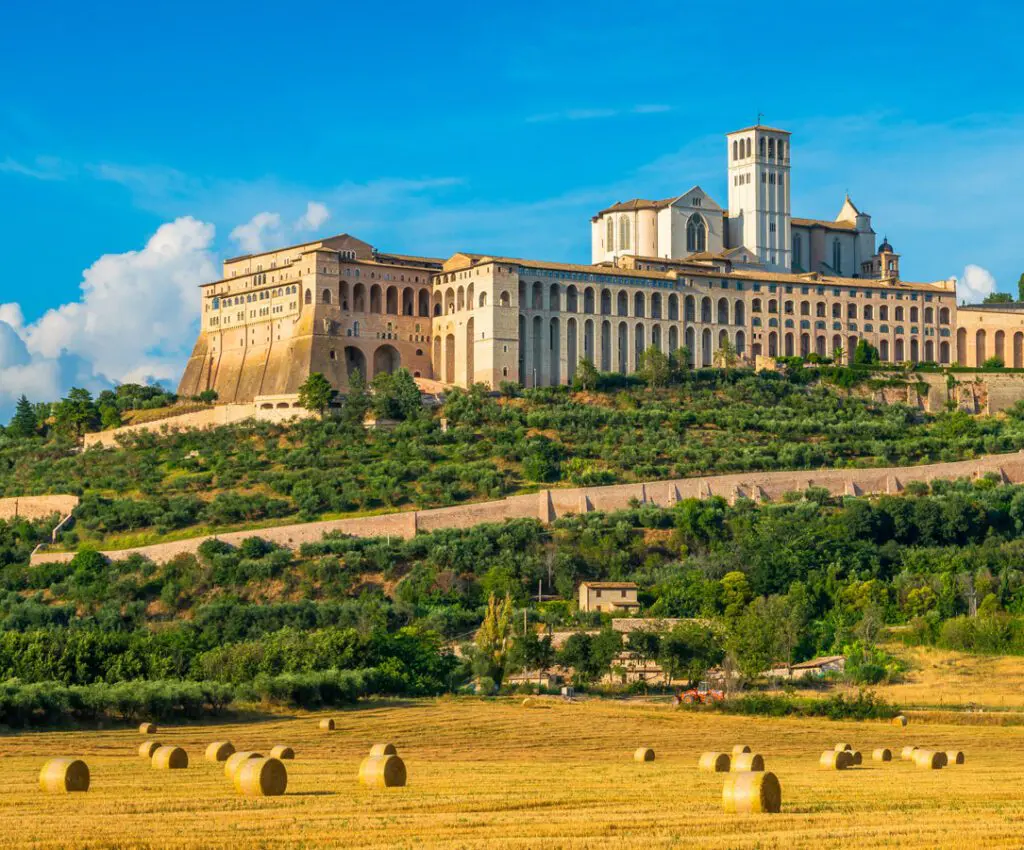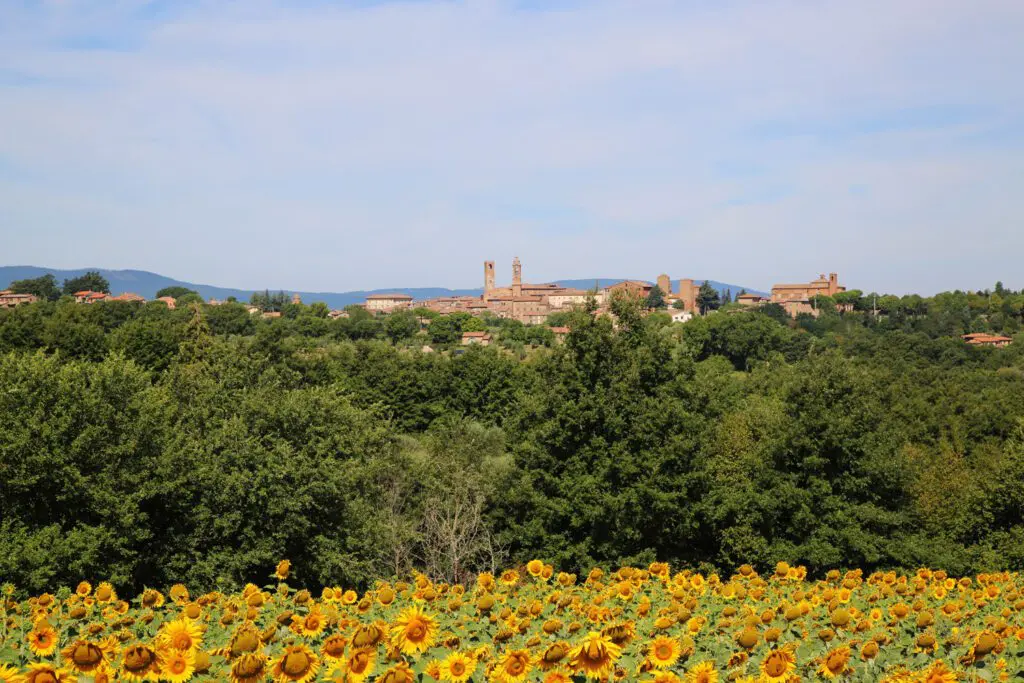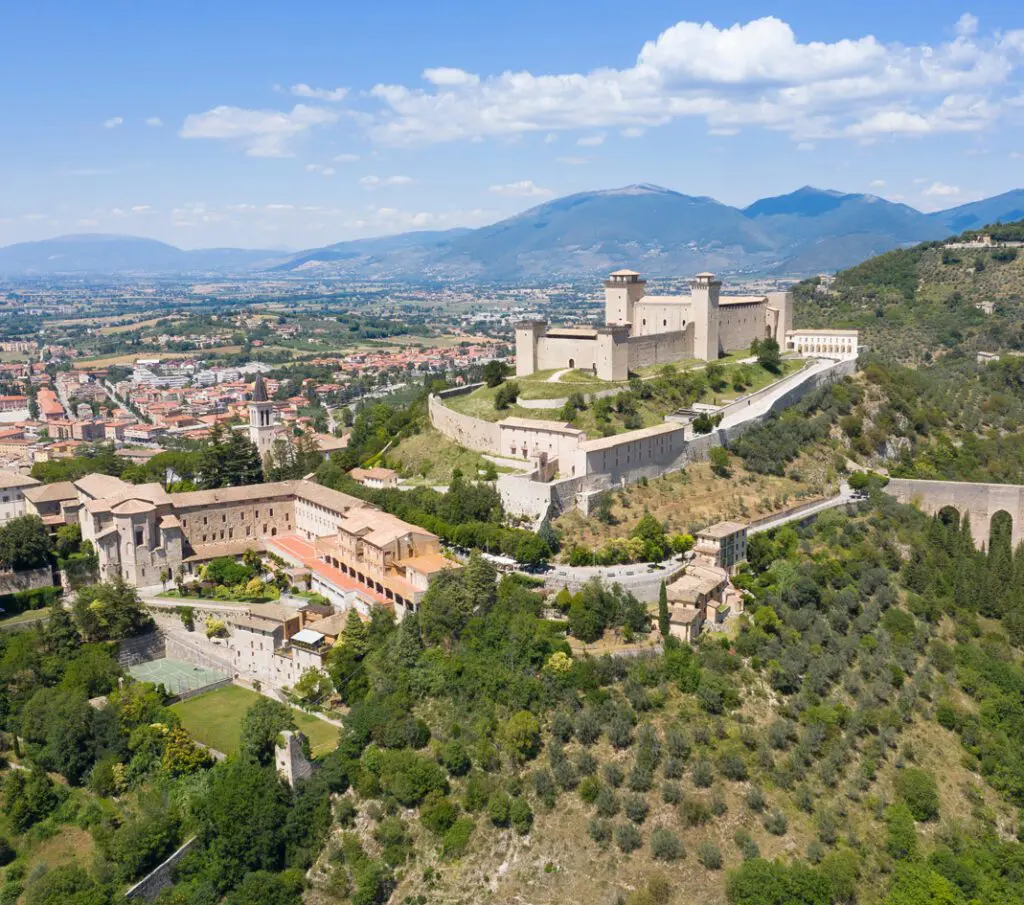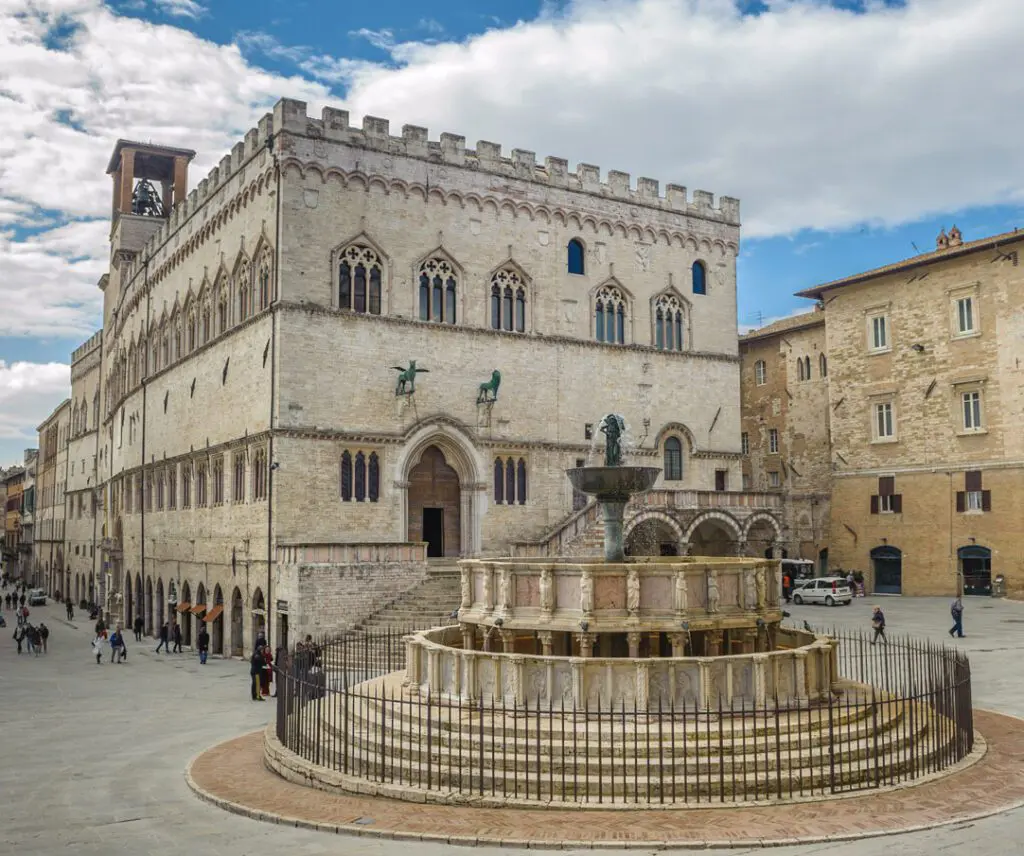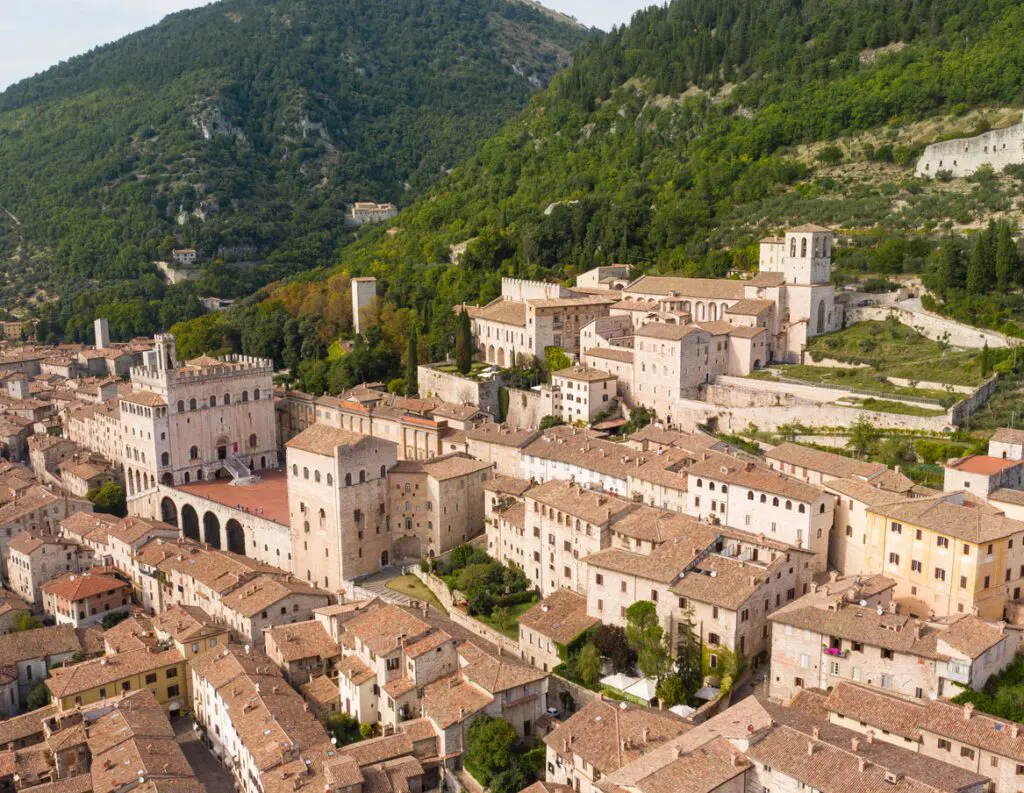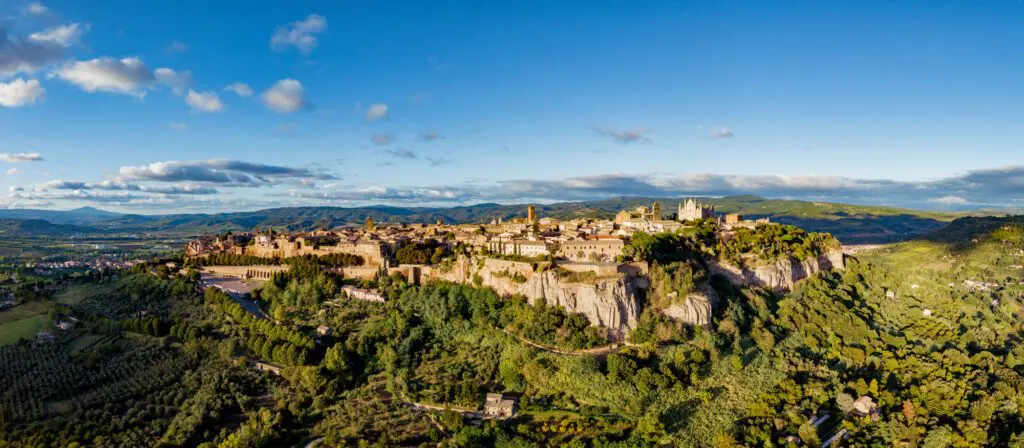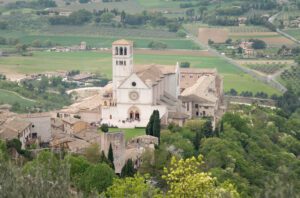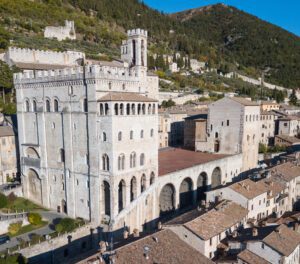A Giant in the Square
The Palace of Consuls (Palazzo dei Consoli), built in the years 1332-49, rises dramatically on the background of Piazza Grande, the Main Square. It is more than 60 meters (180 feet) high, including its originally shaped bell tower that still nowadays “calls” the citizens. In fact, thanks to teams of master bell ringers who activate the famous Campanone (Big Bell) by hand, the main civil and religious feast days enjoy a fascinating accompaniment.
To reach the palace gate you will go up a staircase built on a flying buttress and shaped like a fan, harmoniously opening on the square. The stone balcony used to be the most important place for the political organization of Gubbio. Here the leaders held their exhortations, or promulgated the decrees for the town's governance.
The Façade
The façade of the Palace of Consuls is vertically marked by half pilasters, and horizontally divided in three levels. The lower level is embellished by a sculpture/architectural set with the entrance gate and double-lobed, fretworked windows under round arches. It is the work of an architect and sculptor from Orvieto, named Angelo, whose activity here is stated by an inscription over the gate. The gate also has a lunette frescoed about 1495, featuring Virgin Mary and the Infant Jesus, together with Saint John the Baptist and Saint Ubaldo, the Medieval bishop, now patron saint of Gubbio. Just below it, on a lintel, the emblem of the Town of Gubbio is sculpted, beside Papal and Angevin (i.e. French Medieval kings) emblems.
The second level on the façade displays six round-arched windows enclosed in an indented frame. Still above, see typical Medieval merlons, whose base is decorated with a fine frame with ogival little arches.
The back and the right sides of the building basically share the same features, while definitely noteworthy is the panoramic portico on the left, that leads to the underlying street. The passage, that has never been 100% completed, has big ogival arches, typically Gothic.
The Interiors
The Palace of Consuls is internally as much fascinating as outside, thanks to both its halls (where the Civic Museum has been housed since 1909) and the fountain (called Fons Arenghi), with a hydraulic and sanitary system that surely was avantgarde at that time.
Amazing is the Sala dell'Arengo, the Medieval assembly hall, with its vast barrel vault; here the meetings of the “Great General People's Council” took place. A fresco of the mid-14th century is still visible. The hall currently hosts the Lapidarium, a collection of artifacts from the Roman Era, mostly from the area of the Roman Theater – downhill with reference to downtown. Next to the great hall, finally, a chapel exists with a fresco showing the “Majesty of Consuls” and Virgin Mary enthroned
Tavole Iguvine (The Gubbio Panels)
Here one of the major documents from ancient Ikuvium (whence “Gubbio”) is preserved: the Tavole Iguvine. It is about seven bronze panels, engraved on both sides, that were discovered in 1444. They were produced between the third and the first centuries BC, and contain the longest text in the old Umbrian language that has survived. The text carefully describes some religious rites of the ancient Western world, from purification rites to animal sacrifices as an offering to the gods, from prayers and supplications to law rules.
The Art Gallery
The second floor (traditionally called piano nobile in Italian villas: the “noble/lordly floor”) was designated for personal rooms, the kitchen, and many toilets, beside the room of the Secret Council. Here the indoor fountain is found, meaning that an important public aqueduct existed, which supplied the whole town, private houses included. A demonstration, as well, that local specialists had a very advanced knowledge in hydraulic engineering.
The floor currently houses the Art Gallery (Pinacoteca).
The Paintings
In the Art Gallery you will be able to admire frescoes, paintings on panel and canvas, mostly by artists of the “Umbrian School,” from the late 13th century to the 19th century.
Especially noticeable are the works from the Medieval period. There stand out the paintings by the so-called Maestro della Croce di Gubbio (i.e., an anonymous Gubbio master, who painted a fine Crucifixion) and big polyptychs influenced by the art patterns developed in Siena, Tuscany.
Among the large oil paintings on canvas of the 16th and 17th centuries, mainly altarpieces and official town standards (gonfaloni), see especially the works by Sinibaldo Ibi, Francesco Signorelli (not to be mistaken for Luca Signorelli, who was his uncle), Benedetto and Virgilio Nucci.
More Artifacts
The museum also offers a Risorgimento Collection, that is, visual documents about the role played by Gubbio in the process of Italy's National Unification in the mid-19th century. And moreover, the “Vivian Gabriel” Oriental Collection, with objects referring to religious life especially in the history of Tibet, Nepal, India, and China.
In the collection of old majolica pottery in the Art Gallery, precious Renaissance works coming from the workshop of Master Giorgio Andreoli are especially represented, employing red, green, and yellow lustro. He in fact was among the artisans who first introduced the lustro technique into Italy, which enriches the surface of ceramic artifacts by giving them iridescent effects.
Important, finally, is also the modern production in ceramic, here displayed through works by such authors as Fabbri, Carrocci, Spinaci, Passalboni, and Magni. The tour ends in front of masterpieces by a great master, Aldo Ajò, the leading exponent of contemporary craftsmanship in this field
INFO
Location
Piazza Grande, 06024 Gubbio PG
Guided Tours Schedule
Everyday:
10:00 - 13:00
15:00 - 18:00
Contacts
info@secretumbria.it
